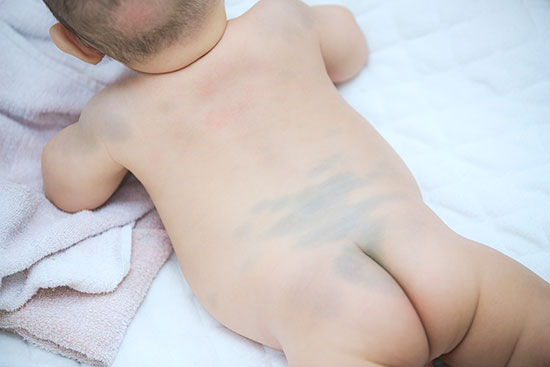Congenital dermal melanocytosis (mongolian spots) is a benign discoloration of the skin most often seen in newborns of ethnicities with darker skin tones (eg, African American, Native American, Hispanic, Asian).
Mongolian spots are usually bluish gray and fade over the first 1-2 years of life. Because they are easily misidentified as bruises, it is important for the nurse to measure and document the area for reference during future health care assessments.
(Option 1) Mongolian spots are common birthmarks and are not associated with abnormal laboratory values.
(Option 3) Mongolian spots are benign, so immediately notifying the health care provider is not indicated. (Option 4) Although often mistaken for bruises, mongolian spots are normal skin variations and are not due to trauma.

Congenital dermal melanocytosis (mongolian spots) is a benign discoloration of the skin most often seen in newborns of ethnicities with darker skin tones (eg, African American, Native American, Hispanic, Asian).
Mongolian spots are usually bluish gray and fade over the first 1-2 years of life. Because they are easily misidentified as bruises, it is important for the nurse to measure and document the area for reference during future health care assessments.
(Option 1) Mongolian spots are common birthmarks and are not associated with abnormal laboratory values.
(Option 3) Mongolian spots are benign, so immediately notifying the health care provider is not indicated. (Option 4) Although often mistaken for bruises, mongolian spots are normal skin variations and are not due to trauma.
